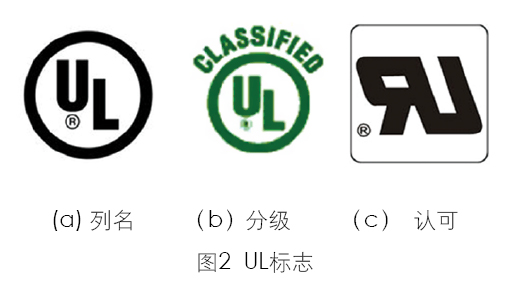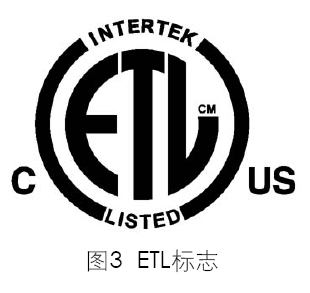After joining the WTO, domestic companies are facing more serious foreign advanced technology, scientific management and various laws and regulations and severe impacts. Many countries, especially developed countries, have introduced many new technology trade measures, not only New requirements have been added to protect personal safety and health, and new developments have been made in energy consumption and environmental protection measures. Such as electronic and electrical products exported to the European Union, must be affixed CE certification mark on the product or packaging; products exported to North America, must be affixed UL, cUL or ETL, cETL certification mark, otherwise the product will be banned in the country or Regional circulation. In addition, the European Union recently issued the WEEE and RoHS directives, Japan, South Korea has also revised its "Electronic and Electrical Safety Management Act", the United States, Russia and Australia, New Zealand and other countries for the electrical product market access also has specific laws and Technical measures. So how do you prove that the product meets the requirements of these laws and technical measures? This requires testing by an independent third-party testing agency to show compliance with the relevant laws and regulations of the host country and obtaining the corresponding product certification mark. This is what we usually see on the packaging of exported electronic and electrical products. With different certification marks printed, it can be seen that certification can regulate a country's import and export trade capabilities. This article only introduces the use of several common foreign product certification marks and their logos.
CE mark
CE mark overview
CEMarking (CE mark) is regarded as a passport for manufacturers to open and enter the European market. All products bearing the “CE†mark can be sold within the EU member states without having to meet the requirements of each member country, thus achieving free circulation of goods within the EU member states.
The significance of the CE mark lies in that the product with the CE mark as a symbol with the CE abbreviation signifies the essential requirements (Essential Requirements) specified in the relevant European Directive, and is used to verify that the product has passed the corresponding conformity assessment procedure and/or manufacturer. The declaration of conformity really becomes a permit for the product to be allowed to enter the EC market. The industrial products that require the CE mark to be attached to the relevant directives shall not be listed and sold without the CE mark. Products that have been marked with the CE mark into the market shall be ordered to be withdrawn from the market if they do not meet the safety requirements, and the relevant CE marking regulations shall be continuously violated. , will be restricted or prohibited from entering the EU market or forced to withdraw from the market. However, not all EU Directives use the CE mark, and some laws do not provide or allow the use of the CE mark, such as packaging and packaging waste instructions, or products that are not technically coordinated, and some instructions have unique representations.
CE mark style
According to the directives, the EU has uniform regulations on the size and style of the CE mark. The CE mark pattern is shown in Fig. 1, and it should be enlarged or reduced as required. The height of the CE must be at least 5mm.

CE mark use requirements
According to EU regulations on the use of the CE mark, manufacturers shall apply the CE mark on the packaging of products and products as follows:
1. Unless otherwise stated in the technical regulations, the minimum height of the mark is not less than 5mm.
2. The mark shall be affixed to the product or nameplate. If it is impossible or not allowed to adhere to the product due to its characteristics, it shall be affixed to the package. If the relevant regulations require the product to be accompanied by certain documents, it shall be marked on the document.
3. The affixed CE mark must be legible and difficult to wipe off.
4. For different instructions CE mark also need to add the information specified in the instruction.
UL mark
UL Mark Overview
UL is a shorthand for Underwriter Laboratories Inc. The UL Underwriters Laboratories is the most authoritative in the United States and the largest private institution engaged in safety testing and identification in the world. It is an independent, non-profit professional organization that conducts tests for public safety. UL was founded in 1894. In the initial stage, UL mainly relied on the fire insurance department to provide funds to maintain operations. Until 1916, UL was completely independent. After nearly a hundred years of development, UL has become a world-renowned certification body. It has a complete set of organizational management systems, standards development and product certification procedures. UL is managed by a board of representatives with security experts, government officials, consumers, education, utilities, insurance, and standards departments. The daily work is handled by the president and vice president. Currently, UL has five laboratories in the United States and is headquartered in Northbrook, a town in northern Chicago. At the same time, UL has set up corresponding laboratories in Taiwan and Hong Kong.
For UL's different types of services, UL Marks can be divided into three categories, namely, column names, ratings, and recognition marks.
1. Listed. Only for complete products and devices or devices that qualified personnel replace or install in the field. Products that belong to UL Listed Services include: IT equipment, AV equipment, refrigerators, vacuum cleaners and other electrical equipment. If the final product is to be marked with the UL Listed Mark, the sample shall be tested by UL to confirm that there are no hidden dangers of fire and electrical hazards.
2. Recognized. Approval is mainly a safety certification for the implementation of components and materials. The components approved by the approved service will be assembled in the finished product, and the components must comply with the relevant permit conditions before they can be applied to the corresponding finished product. Such as: switches, power supplies, printed boards, transformers, wires, plugs, plastic materials are all recognized objects.
3. Classified. UL's grading service is a safety certification program for assessing the special performance of products used in commercial or industrial environments in accordance with relevant laws and regulations. The graded service is mainly for building materials, various fire protection equipment and navigation equipment.
The three kinds of logos are used for products of three different types of services, and cannot be used together. Otherwise, they can be considered counterfeit products. UL's services are based not only on the U.S. UL standard but also on the Canadian standard (cUL). Thus, the UL mark is also divided into three categories for UL products and cUL products, as well as for both.
UL mark style
The UL mark is usually marked on the product and/or product packaging to indicate that the product has passed UL certification and meets safety standards. The most important components of these tags are UL symbologies, which are registered trademarks of UL, as shown in Figure 2.

(a) Listing (b) Classification (c) Approval
Figure 2 UL mark
UL mark use requirements
1. The minimum height of the registered trademark ® should be 3/64 inches.
2. When the UL marked outer diameter is less than 3/8 inch, the registered trademark symbol can be ignored if it is not clearly readable under naked vision.
3. Marks can be stamped, molded, ink-printed, screen-printed, or the like directly and fixed to a constant product.
4. Acquisition of logos: Manufacturers can reproduce or obtain them from authorized UL dealers.
5. ULus logo (only us, no c): safety signs for products entering the US market; cUL (only c, no us): safety signs for products entering the Canadian market; cULus mark: safety signs for products entering the US market and the Canadian market.
ETL logo
ETL mark overview
ETL is an abbreviation for Electrical Testing Laboratories. The ETL laboratory was founded by American inventor Edison in 1896 and enjoys a high reputation in the United States and around the world. Like UL and CSA, ETL can test and issue ETL certification marks according to UL standards or US national standards, and can also test and issue composite certification marks in accordance with UL standards or US national standards and CSA standards or Canadian standards. The "us" in the lower right indicates that it applies to the United States, the lower left "c" indicates that it applies to Canada, and the terms "us" and "c" apply to both countries.
Any electrical, mechanical, or electromechanical product that bears an ETL mark indicates that the product has met the minimum requirements of the generally recognized U.S. and Canadian product safety standards. It has been tested by Intertek ETLSEMKO, the Nationally Recognized Testing Laboratory (NRTL). Relevant product safety standards; but also represents the production plant agreed to receive strict periodic inspections to ensure product quality consistency, can be sold to the United States and Canada markets. For distributors, retailers and consumers, it is they who have purchased products that have been tested and certified by third parties.
ETL logo style
The ETL mark is usually marked on the product and/or product packaging to indicate that the product has passed ETL certification and meets safety standards. The ETL logo was issued by Intertek ETLSEMKO, as shown in Figure 3.

ETL logo usage requirements
1. The smallest outer diameter of ETL logo is 8mm, "C" & "US", minimum height is 2.0mm, and "CM" minimum height is 1.0mm.
2. The ETL logo is provided by Intertek and can scale up or down ETL listings, but it cannot change its design.
3. The color of the logo can be 100% black or PMS185 red.
5. ETLus logo (only us, no c): safety signs for products entering the US market; cETL (c only, no us): safety signs for products entering the Canadian market; cETLus mark: safety signs for products entering the US market and the Canadian market.
(To be continued)
Hyaluronic Acid Injection Filler Foe Face
Hyaluronic Acid Injection Filler Foe Face,Anti-Aging Cross Linked Hyaluronic Acid,Dermal Filler Injection Syringe,Hyaluronic Acid Hyaron Filler
Shijiazhuang Asa Technology Co., Ltd. , https://www.hskinlift.com